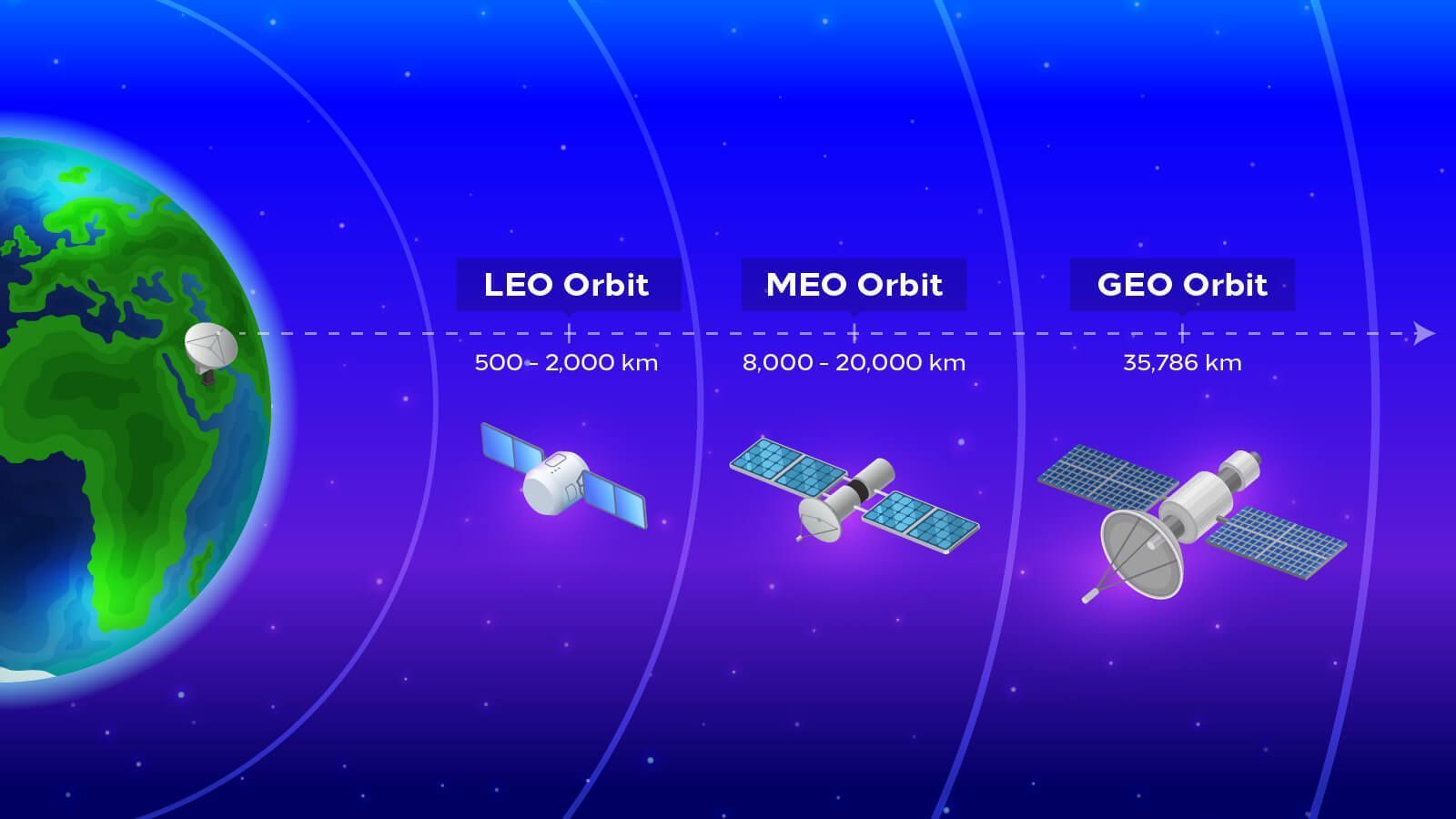Amateur Radio Satellites
Most current Amateur Radio satellites (or OSCARs, for Orbiting Satellite Carrying Amateur Radio) are in Low Earth Orbit (LEO). These are in orbits that are mostly circular at altitudes somewhere between 400 kilometres (250 miles) to 1,300 km (800 mi) above the surface of the earth. The higher the satellite's orbit, the larger its footprint (the larger the circle of stations on the ground that will have the satellite in view), above their horizon, at any given time. Amateur radio satellites may also orbit in Medium Earth Orbit 9MEO) at altitudes between from 2,000 kilometres (1,240 miles) to less than 35,786 kilometres (22,236 miles). 35,786 kilometres is the altitude for a geosynchronous orbit (GEO), meaning that the satellite takes one day to complete an orbit. They return to the exactly same point in the sky after one day. They could rotate in the same direction as the earth or in opposite direction.

In addition to the altitude, another significant attribute of a satellite's orbit is its inclination, that is, the angle at which it crosses the equator as it circles the earth. Some satellites are in near polar orbit (have an inclination approaching 90 degrees so that they pass very near to both the North Pole and the South Pole on each orbit). Other satellites have a much lower inclination, so that they never pass near the poles, but track north and south across middle latitudes. Both types of orbits are useful to amateurs for communication. Higher inclination satellites will tend to pass over a given location on earth from north to south or from south to north, and may tend to pass that location at roughly the same time of day. Lower inclination satellites will generally track across a given location from west to east (due to the rotation of the earth) at times that vary greatly from day to day.
There are three basic types of Amateur Radio satellites: Those that use various digital modes for communication between earth stations or to transmit telemetry data from onboard experiments, those that use FM phone for voice communication between earth stations, and those carrying linear transponders in order to allow communication between earth stations using CW or SSB phone across a narrow band of frequencies. Many digital stations can be heard with very simple receivers, if one knows when to listen and on what frequency to tune.